LA COLONIA SOMALA
Dubat - i Bersaglieri neri
SOMALIA: UN PAESE INVENTATO.
Poche settimane dopo l'occupazione di Massaua (1885), il Regio Avviso (nave)"Barbarigo" ebbe l'ordine di recarsi a Zanzibàr (isola), di visitare le coste di terraferma dipendenti dall'omonimo sultanato (protettorato inglese) e di esplorare le foci del Giuba (fiume). La missione: avviare col sultano negoziati per un trattato commerciale. L'incarico fu affidato al Cap. Antonio Cecchi e al comandante della nave. Nel maggio del 1885 veniva concluso il primo accordo commerciale col sultano. Ulteriori accordi
 portarono poi all'affitto del
Benadir (la fascia di costa meridionale con le città di Mogadiscio e
Brava) tramite le imprese private di Filonardi e la Società del Benadir
creata appositamente. Ricordiamo che l'Italia aiuterà gli Inglesi in Sudan nella
guerra contro il Mahdi e quindi era in credito di favori. Le lotte intestine,
gli sconfinamenti di bande dall'interno abissino spingono nel 1889 i sultani di
Obbia, (Yusuf Ali) e Migiurtina (Osman Mahamud), due regioni somale confinanti a
nord-est, a chiedere il nostro protettorato. Per conformazione geografica e
climatica la Somalia vive dalla costa verso l'interno sui corsi d'acqua
torrentizi e stagionali, ma non lungo il litorale collegato da porto a porto, da
punto a punto, solo via mare. Nei successivi due anni sono colonizzate altre
città minori della costa. Filonardi nominato console fonda nel villaggio El
Ataleh la nuova colonia Itala.
portarono poi all'affitto del
Benadir (la fascia di costa meridionale con le città di Mogadiscio e
Brava) tramite le imprese private di Filonardi e la Società del Benadir
creata appositamente. Ricordiamo che l'Italia aiuterà gli Inglesi in Sudan nella
guerra contro il Mahdi e quindi era in credito di favori. Le lotte intestine,
gli sconfinamenti di bande dall'interno abissino spingono nel 1889 i sultani di
Obbia, (Yusuf Ali) e Migiurtina (Osman Mahamud), due regioni somale confinanti a
nord-est, a chiedere il nostro protettorato. Per conformazione geografica e
climatica la Somalia vive dalla costa verso l'interno sui corsi d'acqua
torrentizi e stagionali, ma non lungo il litorale collegato da porto a porto, da
punto a punto, solo via mare. Nei successivi due anni sono colonizzate altre
città minori della costa. Filonardi nominato console fonda nel villaggio El
Ataleh la nuova colonia Itala.12 Agosto 1892: preceduta dal protocollo anglo-italiano per determinare la sfera d'influenza delle due potenze nel Corno d'Africa viene firmata la convenzione italo-zanzibarese con la quale si stabilisce l'affitto all'Italia di Uarscéc, Mogadìscio, Mérca, Bràva e territori circostanti per 25 anni. Scaduti i 25 anni l'Italia poteva rinnovare la convenzione per altri 25. Il canone annuo da corrispondere al sultano (Zanzibar) era di 160.000 rupie, ridotte poi a 120.000. L'affitto delle quattro stazioni costiere passò in subconcessione alla Società Filonardi. Dai punti della costa, come era già successo in Eritrea, seguendo i letti dei fiumi, partono le spedizioni scientifiche e geografiche per conoscere le potenzialità dell'interno (su queste coste era tuttora fiorente il commercio "illegale" degli schiavi da parte degli arabi).
 11 Ottobre 1893: cade a Mérca, ucciso
dai Bimàl (tribù), il ten. Maurizio Talmone.
11 Ottobre 1893: cade a Mérca, ucciso
dai Bimàl (tribù), il ten. Maurizio Talmone.26 Novembre 1896: il cap. Cecchi, divenuto console e impegnato per conto della Soc. Benàdir in una pacifica penetrazione a scopo d'amicizia col sultano di Ghelédi, è massacrato nella boscaglia di Lafolé a soli 20 Km da Mogadiscio. Persero la vita, insieme a comandanti, ufficiali e alcuni marinai delle navi "Staffetta" e "Volturno", anche alcuni europei. A Lugh, Ugo Ferrandi è costretto a resistere da solo agli attacchi dei razziatori abissini, imbaldanziti dalle sconfitte italiane in Eritrea dopo Adua. La località si chiamerà poi Lugh Ferrandi. Il triangolo compreso fra il Somaliland britannico, la punta del corno d'Africa, e la Somalia colonizzata si chiama Ogaden. Qui sorgeranno i primi problemi di confine con i Ras Abissini, che sfoceranno in guerra aperta nel '36 e in tempi recenti nella prima guerra africana fra la Somalia e L'Etiopia.
17 Marzo 1897: nello Scioà è decimata da un attacco etiope la carovana dell'esploratore Vittorio Bòttego che vi trova la morte.
Marzo 1902: la Soc. del Benàdir presenta al Parlamento un programma d'azione vasto e coordinato che porta poi all'occupazione di Bardéra e Lugh, l'istituzione di un servizio di trasporti di terra e di mare e un trattato col sultano di Ghelédi. Le forze militari italiane in quel paese sono veramente esigue e costituite solo da locali o yemeniti mercenari costituiti in bande comandate da Italiani e da eritrei. Due anni dopo, la crisi commerciale della Società del Benadir e la politica restrittiva italiana che prendeva provvedimenti contro la schiavitù delle tribù arabe della costa, portò al primo scontro con la fazione dei Bimal nella zona di Merca. Nostre accuse di schiavismo ritenute infondate e timori d'invasione del Mùllah portano alla risoluzione della convenzione con la Soc. del Benàdir. Di fatto, però l'Italia s'era sostituita alla Società già da alcuni mesi. Nei successivi quattro anni si conteranno altre due guerre contro questa Tribù.
13 Gennaio 1905: accordo tra Italia e Inghilterra (che rappresentava "tout court !!!" il sultano di Zanzibàr). L'Italia riscatta i quattro scali somali in cambio di un compenso forfettario di 144.000 sterline destinate al governo di Zanzibàr. Con un altro accordo, l'Inghilterra affitta all'Italia un appezzamento di terreno nella baia di Chisimàio. Il terreno è destinato alla costruzione di uno sbarcatoio e di magazzini merci. Nello stesso anno è proclamata la colonia italiana della Somalia (a nordest e sud).
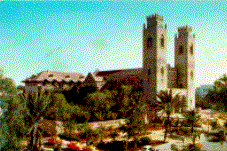 26 Agosto 1905:
vittoria italiana a Gilìb contro i ribelli Bimàl, contrari
ad abolizione e repressione della schiavitù (per le tribù guerriere rastrellare
le zone più inesplorate a caccia di schiavi per gli arabi era un
"Business".
26 Agosto 1905:
vittoria italiana a Gilìb contro i ribelli Bimàl, contrari
ad abolizione e repressione della schiavitù (per le tribù guerriere rastrellare
le zone più inesplorate a caccia di schiavi per gli arabi era un
"Business".06 Febbraio 1907: sulla costa fra Mérca e Mogadìscio è previsto un concentramento di ribelli Bimàl; per impedirlo, 2 colonne (600 ascari comandati dal Ten. Streva e 4 sottotenenti) muovono dalle città e disperdono i ribelli ritirandosi poi a Danàne.
Settembre 1907: Menelik invia dall'Etiopia una spedizione per estorcere tributi. Dopo essere stata respinta una prima volta dagli uomini del Mullah, riesce a raggiungere i pozzi di Berdalè presso Lugh dando inizio ad una serie di razzie. I capitani Bongiovanni e Molinari con 300 uomini decidono di intervenire per ottenere pacificamente la restituzione del bottino. Raggiunta Bahallè sono costretti allo scontro dagli abissini e vi trovano la morte. Gli eccessi compiuti nelle razzie verranno puniti dallo stesso Menelik. In seguito a questi fatti si conclude ad Addis Abeba un trattato per la delimitazione dei confini tra Etiopia e colonia Somala. In pratica però i confini furono fissati solo da Dòlo (a sud) a Lét. Il problema dei confini, che comprendeva anche l'Ogaden, resterà sospeso e sarà una palla al piede della diplomazia italiana e causa di guerra per noi e dopo di noi.
15 Dicembre 1907-02 Marzo 1908: il cap. Vitali alla testa di 500 ascari batte a Dongàb i ribelli Bimàl, tornati all'azione contro l'estendersi dell'occupazione italiana. L'azione è sostenuta dalla Regia Nave "Staffetta", con la cooperazione della R.N. "Volta, che dal mare disperdono a cannonate i ribelli presso Danàne.
11-12 Luglio 1908: la spedizione guidata dal magg. Antonino Di Giorgio libera Mérca, minacciata dai ribelli. Scontro a Merére tra i ribelli e gli uomini di Di Giorgio (Sarà generale nella grande guerra quando comanderà il corpo d'armata speciale di copertura della ritirata da Caporetto) che sono costretti ad incendiare il villaggio ed in seguito ad occupare Afgòi. Il sultano di Ghelédi con 5000 armati si sottomette all'Italia.
01 Agosto 1912: gli italiani occupano Uànle Uén mentre gli inglesi combattono ferocemente contro gli uomini del Mullah che stanno dilagando nel Somaliland. Questi era un ribelle, che passerà alla storia col nome di Mad Mullah “Mullah Matto” noto ai somali come Sayed Mohamed Abdulla Hassan. Tenne impegnate per oltre un trentennio (1889/1920) soprattutto le forze britanniche del Somaliland, ma diede molti fastidi militari, fino alla sua morte, anche alla colonia italiana. Gli strascichi della guerra Italo-Turca coinvolgono anche piccoli scontri a Balad (gennaio 1912) e Scidle (marzo 1912)
19 Giugno 1913: truppe italiane a Bur Acaba e ad Iscia Baidòa.
Febbraio 1920: la grande offensiva inglese contro il Mullah termina con la fuga di quest'ultimo nel nostro territorio del Nogàl. Egli morirà presso Imi nell'alto Uébi nel 1921. In Italia intanto viene costituita a Milano la Società Agricola Italo-Somala su iniziativa di S.A.R. il Duca degli Abruzzi.
15 Luglio 1924 Convenzione di Londra: l'Inghilterra cede il Jubaland all'Italia come compenso post-bellico (per non aver partecipato alla spartizione delle colonie tedesche ?). Nel luglio dell'anno successivo iniziano le operazioni per l'occupazione del Jubaland sotto il Commissariato Generale dell'Oltregiuba. La Somalia non diventerà mai una colonia di popolamento, anzi la capitale Mogadiscio non arriverà mai alle dimensioni "italiane" di Asmara, arrivando a contare, al massimo dell'immigrazione italiana, non più di 10.000 italiani.
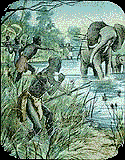 |
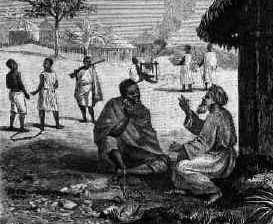 |
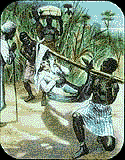 |
 |
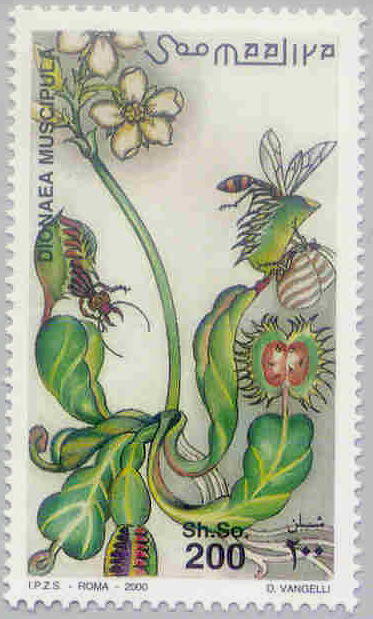 |
La regione OGADEN nella saga
della Somalia. Pagina rielaborata dal sito http://www.italosomali.org/Ogaden.htm.
La provincia era parte
integrante del territorio somalo, prima che fosse ceduta al re etiope Menelik
II, che nel 1887 andò a Berlino a mendicare presso le grandi potenze uno sbocco
verso il mare, ora che gli italiani si erano presi l'Eritrea e i Francesi
Gibuti. I tre firmatari Italia, Gran Bretagna e Francia durante gli anni
1884-1886 cedettero l'Ogaden a titolo di gratificazione all’Etiopia per non
averli ostacolati nella ricerca delle concessioni territoriali nel corno
d'Africa. L’impero Ottomano attraverso il Khedive d’Egitto (e per questo sotto
alta sipervisione Inglese), esercitava una sorta di potere religioso coloniale
sul territorio, tra cui i tre sultanati di Obbia, Migiurtinia e Zanzibar. Nel
1882, lo Stato italiano decise di rilevare alcune aree per iniziare la sua
conquista coloniale, cominciando dall’Eritrea (che sarà colonia l'1/1/1890).
Giuseppe Candeo (è a lui che si deve la conoscenza dell'Ogaden e la
compilazione della grande carta della stessa regione) fece un viaggio di
esplorazione nel 1891 con Baudi di Vesme nella Somalia centrale. Giunti ad
Harar, il 22 maggio, furono imprigionati per ordine di Ras Makonnen poi
espulsi.  L'Italia, dopo la pace
dell'ottobre del 1896 stipulò, il 10 luglio del 1900, il trattato relativo alla
frontiera. Con questo si cancellava per sempre il Trattato di Uccialli
(protettorato italiano sull'Etiopia). Più tardi, vennero due convenzioni: una
il 15 maggio del 1902, per la delimitazione del confine tra l'Eritrea, il Sudan
e l'Etiopia verso il Setit e, l'altra del 16 maggio 1908, per il confine tra
l'Abissinia e la Somalia italiana e tra l'Abissinia e l'Eritrea verso la
desertica e inospitale Dancalia.
L'Italia, dopo la pace
dell'ottobre del 1896 stipulò, il 10 luglio del 1900, il trattato relativo alla
frontiera. Con questo si cancellava per sempre il Trattato di Uccialli
(protettorato italiano sull'Etiopia). Più tardi, vennero due convenzioni: una
il 15 maggio del 1902, per la delimitazione del confine tra l'Eritrea, il Sudan
e l'Etiopia verso il Setit e, l'altra del 16 maggio 1908, per il confine tra
l'Abissinia e la Somalia italiana e tra l'Abissinia e l'Eritrea verso la
desertica e inospitale Dancalia.
 L'Italia, dopo la pace
dell'ottobre del 1896 stipulò, il 10 luglio del 1900, il trattato relativo alla
frontiera. Con questo si cancellava per sempre il Trattato di Uccialli
(protettorato italiano sull'Etiopia). Più tardi, vennero due convenzioni: una
il 15 maggio del 1902, per la delimitazione del confine tra l'Eritrea, il Sudan
e l'Etiopia verso il Setit e, l'altra del 16 maggio 1908, per il confine tra
l'Abissinia e la Somalia italiana e tra l'Abissinia e l'Eritrea verso la
desertica e inospitale Dancalia.
L'Italia, dopo la pace
dell'ottobre del 1896 stipulò, il 10 luglio del 1900, il trattato relativo alla
frontiera. Con questo si cancellava per sempre il Trattato di Uccialli
(protettorato italiano sull'Etiopia). Più tardi, vennero due convenzioni: una
il 15 maggio del 1902, per la delimitazione del confine tra l'Eritrea, il Sudan
e l'Etiopia verso il Setit e, l'altra del 16 maggio 1908, per il confine tra
l'Abissinia e la Somalia italiana e tra l'Abissinia e l'Eritrea verso la
desertica e inospitale Dancalia.
1 Giugno
1936: con la costituzione
dell'impero dopo la guerra vittoriosa contro il Negus, l'Ogaden ex-etiope, è
inserito nuovamente nel territorio somalo. Scoppiata la seconda guerra mondiale,
la Somalia fu occupata dalle truppe britanniche che, passato il confine
dell’Oltregiuba dal Kenya, il 27 febbraio 1941 entrarono a Mogadiscio,
assumendone l’amministrazione e costituendo il territorio separato dell’Ogaden.
L'Ogaden veniva così reso definitivamente all’Etiopia. Nel sud gli inglesi
facevano analogo regalo al Kenya della regione somala NFD (North Front
District). L’occupazione inglese del Somaliland durò fino al 31 marzo 1950,
quando questo divenne indipendente. La Somalia, ad amministrazione italiana,
divenne a sua volta indipendente il 1 luglio 1960. A questo punto ci fu
l’unione delle due ex colonie. L’Ogaden nell’ambito della storia somala è la
regione dove si sono combattute battaglie epiche. Correvano i lontani anni
1541/1543 quando le truppe imperiali etiopi furono salvate da un tracollo
militare contro i somali da 400 cattolici portoghesi che aiutarono il negus,
cristiano-copto, usando per la prima volta in Africa Orientale i fucili. I
rapporti tra i due imperi (Portoghese ed Etiope) erano cominciati nel 1502 e
dureranno fino al 1769. Nel 1520 c’era già una Ambasciata portoghese in
Etiopia.  Ma torniamo agli anni 60,
con l’indipendenza della Somalia, che non ha mai cessato di rivendicare la
regione dell’Ogaden come entità geografica e politica somala. Con l'allora Capo
di Stato Maggiore somalo Daud Mohamed Hersi, ci fu una breve scaramuccia di
confine, che gli americani nel periodo protettori di Haile Selassie,
circoscrissero immediatamente prima che sfociasse in guerra. Oggi si ricorda
invece Giggiga come una delle più ardite operazioni aeromobili condotte dai
sovietici in appoggio agli etiopi. Chi ricorda ancora che nell'Ogaden fu
combattuta (1977) una delle più sanguinose guerre convenzionali della storia?.
Quando la Somalia sotto la guida del dittatore Siad Barre tentò di strappare
l'arida regione all'Etiopia, i sovietici comandati dal Generale dell'esercito
Vasily Petrov e il Tenente Generale dell'Aviazione G. Dolnikov congiuntamente ai
cubani guidati dal Generale di Divisione Arnaldo Ochoa (fucilato poi da Castro
per traffico di droga), stabilirono uno stato maggiore congiunto di cui
Menghistu fu il leader politico. La forza armata era formata da 5 Generali
etiopi, 8 cubani, 5 sovietici 2 yemeniti (lo Yemen inviò 2000 soldati), 50.000
soldati etiopici aiutati da 18.000 cubani, piloti israeliani sugli F5, piloti
cubani e yemeniti sui Mig. Ricorrendo ad un imponente ponte aereo in aggiunta
alle informazioni militari dei cubani e dei sovietici che avevano armato fino a
quel momento il regime di Mohamed Siad Barre, nel giro di un anno ricacciarono i
Somali dalle posizioni conquistate, sconfiggendoli nelle battaglie di Diredaua e
Giggiga. Restò famosa l'operazione con cui I russi scavalcarono la linea somala
trasbordando su una imponente massa di elicotteri un'intera divisione
motorizzata. Questa in sintesi la storia dell’Ogaden, terra somala, abitata
dagli Ogaden, etnia somala dei Darod. La Somalia attuale conta circa 6.450.000
abitanti su un territorio di 637.650 kmq densità 10 abitanti per kmq. Chi
spadroneggia sono ancora i vecchi clan, o signori della guerra come è sempre
stato.
Ma torniamo agli anni 60,
con l’indipendenza della Somalia, che non ha mai cessato di rivendicare la
regione dell’Ogaden come entità geografica e politica somala. Con l'allora Capo
di Stato Maggiore somalo Daud Mohamed Hersi, ci fu una breve scaramuccia di
confine, che gli americani nel periodo protettori di Haile Selassie,
circoscrissero immediatamente prima che sfociasse in guerra. Oggi si ricorda
invece Giggiga come una delle più ardite operazioni aeromobili condotte dai
sovietici in appoggio agli etiopi. Chi ricorda ancora che nell'Ogaden fu
combattuta (1977) una delle più sanguinose guerre convenzionali della storia?.
Quando la Somalia sotto la guida del dittatore Siad Barre tentò di strappare
l'arida regione all'Etiopia, i sovietici comandati dal Generale dell'esercito
Vasily Petrov e il Tenente Generale dell'Aviazione G. Dolnikov congiuntamente ai
cubani guidati dal Generale di Divisione Arnaldo Ochoa (fucilato poi da Castro
per traffico di droga), stabilirono uno stato maggiore congiunto di cui
Menghistu fu il leader politico. La forza armata era formata da 5 Generali
etiopi, 8 cubani, 5 sovietici 2 yemeniti (lo Yemen inviò 2000 soldati), 50.000
soldati etiopici aiutati da 18.000 cubani, piloti israeliani sugli F5, piloti
cubani e yemeniti sui Mig. Ricorrendo ad un imponente ponte aereo in aggiunta
alle informazioni militari dei cubani e dei sovietici che avevano armato fino a
quel momento il regime di Mohamed Siad Barre, nel giro di un anno ricacciarono i
Somali dalle posizioni conquistate, sconfiggendoli nelle battaglie di Diredaua e
Giggiga. Restò famosa l'operazione con cui I russi scavalcarono la linea somala
trasbordando su una imponente massa di elicotteri un'intera divisione
motorizzata. Questa in sintesi la storia dell’Ogaden, terra somala, abitata
dagli Ogaden, etnia somala dei Darod. La Somalia attuale conta circa 6.450.000
abitanti su un territorio di 637.650 kmq densità 10 abitanti per kmq. Chi
spadroneggia sono ancora i vecchi clan, o signori della guerra come è sempre
stato.
 Ma torniamo agli anni 60,
con l’indipendenza della Somalia, che non ha mai cessato di rivendicare la
regione dell’Ogaden come entità geografica e politica somala. Con l'allora Capo
di Stato Maggiore somalo Daud Mohamed Hersi, ci fu una breve scaramuccia di
confine, che gli americani nel periodo protettori di Haile Selassie,
circoscrissero immediatamente prima che sfociasse in guerra. Oggi si ricorda
invece Giggiga come una delle più ardite operazioni aeromobili condotte dai
sovietici in appoggio agli etiopi. Chi ricorda ancora che nell'Ogaden fu
combattuta (1977) una delle più sanguinose guerre convenzionali della storia?.
Quando la Somalia sotto la guida del dittatore Siad Barre tentò di strappare
l'arida regione all'Etiopia, i sovietici comandati dal Generale dell'esercito
Vasily Petrov e il Tenente Generale dell'Aviazione G. Dolnikov congiuntamente ai
cubani guidati dal Generale di Divisione Arnaldo Ochoa (fucilato poi da Castro
per traffico di droga), stabilirono uno stato maggiore congiunto di cui
Menghistu fu il leader politico. La forza armata era formata da 5 Generali
etiopi, 8 cubani, 5 sovietici 2 yemeniti (lo Yemen inviò 2000 soldati), 50.000
soldati etiopici aiutati da 18.000 cubani, piloti israeliani sugli F5, piloti
cubani e yemeniti sui Mig. Ricorrendo ad un imponente ponte aereo in aggiunta
alle informazioni militari dei cubani e dei sovietici che avevano armato fino a
quel momento il regime di Mohamed Siad Barre, nel giro di un anno ricacciarono i
Somali dalle posizioni conquistate, sconfiggendoli nelle battaglie di Diredaua e
Giggiga. Restò famosa l'operazione con cui I russi scavalcarono la linea somala
trasbordando su una imponente massa di elicotteri un'intera divisione
motorizzata. Questa in sintesi la storia dell’Ogaden, terra somala, abitata
dagli Ogaden, etnia somala dei Darod. La Somalia attuale conta circa 6.450.000
abitanti su un territorio di 637.650 kmq densità 10 abitanti per kmq. Chi
spadroneggia sono ancora i vecchi clan, o signori della guerra come è sempre
stato.
Ma torniamo agli anni 60,
con l’indipendenza della Somalia, che non ha mai cessato di rivendicare la
regione dell’Ogaden come entità geografica e politica somala. Con l'allora Capo
di Stato Maggiore somalo Daud Mohamed Hersi, ci fu una breve scaramuccia di
confine, che gli americani nel periodo protettori di Haile Selassie,
circoscrissero immediatamente prima che sfociasse in guerra. Oggi si ricorda
invece Giggiga come una delle più ardite operazioni aeromobili condotte dai
sovietici in appoggio agli etiopi. Chi ricorda ancora che nell'Ogaden fu
combattuta (1977) una delle più sanguinose guerre convenzionali della storia?.
Quando la Somalia sotto la guida del dittatore Siad Barre tentò di strappare
l'arida regione all'Etiopia, i sovietici comandati dal Generale dell'esercito
Vasily Petrov e il Tenente Generale dell'Aviazione G. Dolnikov congiuntamente ai
cubani guidati dal Generale di Divisione Arnaldo Ochoa (fucilato poi da Castro
per traffico di droga), stabilirono uno stato maggiore congiunto di cui
Menghistu fu il leader politico. La forza armata era formata da 5 Generali
etiopi, 8 cubani, 5 sovietici 2 yemeniti (lo Yemen inviò 2000 soldati), 50.000
soldati etiopici aiutati da 18.000 cubani, piloti israeliani sugli F5, piloti
cubani e yemeniti sui Mig. Ricorrendo ad un imponente ponte aereo in aggiunta
alle informazioni militari dei cubani e dei sovietici che avevano armato fino a
quel momento il regime di Mohamed Siad Barre, nel giro di un anno ricacciarono i
Somali dalle posizioni conquistate, sconfiggendoli nelle battaglie di Diredaua e
Giggiga. Restò famosa l'operazione con cui I russi scavalcarono la linea somala
trasbordando su una imponente massa di elicotteri un'intera divisione
motorizzata. Questa in sintesi la storia dell’Ogaden, terra somala, abitata
dagli Ogaden, etnia somala dei Darod. La Somalia attuale conta circa 6.450.000
abitanti su un territorio di 637.650 kmq densità 10 abitanti per kmq. Chi
spadroneggia sono ancora i vecchi clan, o signori della guerra come è sempre
stato. DUBAT - I Bersaglieri Neri
Il Governatore De
Vecchi diede vita nel 1924 ad una specialità denominata "Bande Armate di
Confine" meglio conosciuta con il nome di "Dubat" (Dub=turbanti AT=bianchi). I
Dubat erano una truppa intermedia fra regolari e irregolari. La loro principale
caratteristica consisteva nell'estrema leggerezza di armamento e di
equipaggiamento che permetteva spostamenti rapidissimi. I «dubat» sono snelli e
scattanti, dal passo lungo, nerissimi di pelle ma bianchissimi nei turbanti e
nell'abbigliamento molto leggero per potersi muovere con agilità a guardia delle
frontiere. Sono scelti fra gli uomini più dotati fisicamente e
intellettualmente. Vigili e fedeli furono impareggiabili cavalcatori del
Generale Graziani, divisi in bande comandate da ufficiali italiani, cui venne
affidato il compito di vigilare sul confine. Sempre pronti a reagire contro le
incursioni dei razziatori abissini entro i nostri confini, si spostavano
attraverso la pianura allagata per raggiungere gli obbiettivi (Ogaden conteso),
con zattere abilmente improvvisate, oppure a nuoto, sfidando il pericolo dei
coccodrilli. Gli africani, e soltanto loro, possono confrontarsi con i
coccodrilli a nuoto. 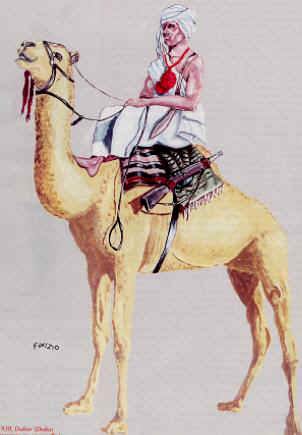

A curiosity:
During "Ibis" mission in 1993, a former Somali Dubat sergeant, something like 80
years old, presented himself to the italian parachutists (Folgore) at the
embassy in Mogadiscio, speaking perfect italian, holding his M91 musket... he
leaved and was treated as an "irregular" for all the period of the mission.
Certo la sorpresa fu tanta quando, nei primi giorni del 1993 nel corso
dell'operazione RESTORE HOPE (Ibis per noi)
lanciata dall'Onu per
riportare il Paese fuori dalla guerra intestina, i
comandanti si videro comparire davanti un Dubat, di una certa età, che disse
" Sono Scirè*, sono stato in
servizio (nei "servizi") delle Vostre unità coloniali e voglio riprendere il mio
posto"
!!!!. A chi pensava fosse uno scherzo non occorse molto per accorgersi che era
tutto vero. Fra le mani dello scalzo Scirè era comparso anche un fucile 91
perfettamente funzionante. Senza autorizzazioni particolari si schierò col
picchetto e piantò la capanna nel cortile della caserma. Una divisa dovettero
anche procurargliela e non c'era persona più ligia e impeccabile nell'eseguire
ordini. Un certo imbarazzo sorgeva solo quando all'alzabandiera salutava con la
formula "Viva il Re, Viva il Duce, Viva l'Italia". Che in Italia
fosse cambiato qualcosa non era cosa che lo riguardava, per lui poi quelli
venuti dopo non erano tanto migliori di quelli di prima. *nota: Scirè
è una regione dell’Etiopia tra i fiumi Tacazzè e Mareb, teatro degli scontri del
1936 per la conquista dell’Etiopia.
VIE E FERROVIE SOMALI
Le possibilità di sviluppo agricolo in Somalia si evidenziano ben presto ottime. Dopo le opportune bonifiche si possono impiantare, il banano (ancor oggi monopolio Usa), il cotone, l'arachide, il sesamo, il mais etc... Il Duca degli Abruzzi, Luigi di Savoia ottiene una concessione di 25.000 ettari che irriga con una grande diga costruita sullo Uebi Scebeli che col Giuba è il più grande e lungo dei fiumi del Sud (l'Oltregiuba come regione viene ceduta dagli inglesi nel 1924). Ulteriori piccole rettifiche di territorio acquisito si avranno fino al 1929. Durante la stagione delle piogge entrambi i fiumi sono navigabili per lunghi tratti. Per la movimentazione dei raccolti al nuovo porto di Mogadiscio viene costruita una piccola ferrovia, che si sviluppa poi per altri rami fino a raggiungere una lunghezza massima di 114 km. Diverso il discorso per le strade che vennero ritracciate e rinnovate togliendole dai pantani stagionali. La costruzione non può non tenere conto delle nuove aree produttive e commerciali sorte, oltre al Villaggio Duca degli Abruzzi già citato, e delle esigenze difensive sia a Nord che a Sud. Viene quindi tracciata una strada carrozzabile di 1484 km che da Mogadiscio per l'interno arriva a Bender Cassim nel Golfo di Aden (1929). Il problema principale è la massicciata che abbisogna di materiale di cava che non esiste nel piano. Con le diramazioni verso la costa e la prosecuzione verso il Kenya il totale delle rete stradale arriva a oltre 10.000 Km. 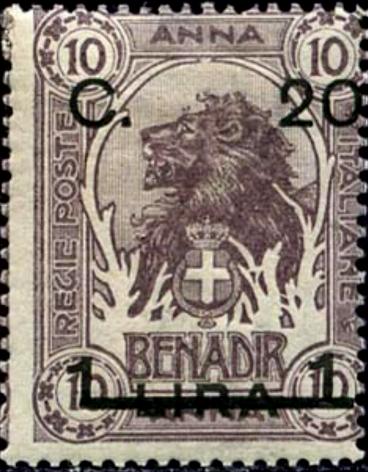
Così il giornalista Queirolo racconta il suo viaggio a Bender Cassim (Bosaso) sulla strada in via di ultime rifiniture (novembre 1929)"....da Ghersale le nostre auto scendono dal treno e si lanciano su Bulo Burti e Belet Uen.. A Belet Uen è un fervore di opere, sono appena trascorsi 13 mesi da quando l'arteria era stata concepita. Lungo la bella via costruita dalle Bande incontriamo di quando in quando i bianchi turbanti dei Dubat, rigidi nel presentat'arm. Ferfer è banda, in tutta la sua eccezione di provvisorietà, ... villaggio dei Dubat ammogliati, in regolari file di capanne e il campo cintato con la sede del comando di settore. Sono già 400 i km fatti e ci aspettano altri 386 km fino a Rocca Littorio fra incredibili termitai.. un poco ci illudiamo di correre sulla Appia Antica. Qualche posto di guardia, un ridottino di sassi e di solito un maestoso albero sul quale in alto si staglia la figura statuaria del Dubat. Le bianche tute, i bianchi turbanti, i torsi nudi scultorei attraversati dalla cartucciera e alla mano il fucile che non si lascia mai. Si lavora e si fa tutto con la mano libera dal fucile. A Garroe il governatore passa in rivista i Dubat che a sera ci allietano di una fantasia tribale... .. saliamo ai 900 metri di Gardò, e il nostro sguardo spazia su gazzelle, struzzi, licaoni, scimmie ma anche volatili e serpenti. La notte fredda ci ha ritemprato e l'alba tinge l'oriente per l'estrema tappa. ... di quando in quando vediamo alberelli di incenso che non si capisce da dove traggano la linfa aggrappati come sono alla nera roccia.......".
Lungo queste strade parte anche il servizio di autocorriera. (Mogadiscio -Bosaso bi e trimensile, Mogadiscio-Lugh km 425 bimensile etc). Bisogna considerare che per quei tragitti non occorrevano meno di 5/6 giorni di viaggio -quasi 1.500 km-, il tempo di ritornare per la nuova corsa. Anche in colonia si sperimentano i carboni alternativi che sono poi quelli di legna, per rendere nel tempo autonoma l'autotrazione. Si bruciano acacie di vario tipo, molto diffuse su arenili e dune, con rendimenti fino al 20% del peso iniziale. Un'altra risorsa somala del corno d'africa sono le saline il cui sale viene inviato al Porto di Hafun (Dante) con una teleferica.

Le possibilità di sviluppo agricolo in Somalia si evidenziano ben presto ottime. Dopo le opportune bonifiche si possono impiantare, il banano (ancor oggi monopolio Usa), il cotone, l'arachide, il sesamo, il mais etc... Il Duca degli Abruzzi, Luigi di Savoia ottiene una concessione di 25.000 ettari che irriga con una grande diga costruita sullo Uebi Scebeli che col Giuba è il più grande e lungo dei fiumi del Sud (l'Oltregiuba come regione viene ceduta dagli inglesi nel 1924). Ulteriori piccole rettifiche di territorio acquisito si avranno fino al 1929. Durante la stagione delle piogge entrambi i fiumi sono navigabili per lunghi tratti. Per la movimentazione dei raccolti al nuovo porto di Mogadiscio viene costruita una piccola ferrovia, che si sviluppa poi per altri rami fino a raggiungere una lunghezza massima di 114 km. Diverso il discorso per le strade che vennero ritracciate e rinnovate togliendole dai pantani stagionali. La costruzione non può non tenere conto delle nuove aree produttive e commerciali sorte, oltre al Villaggio Duca degli Abruzzi già citato, e delle esigenze difensive sia a Nord che a Sud. Viene quindi tracciata una strada carrozzabile di 1484 km che da Mogadiscio per l'interno arriva a Bender Cassim nel Golfo di Aden (1929). Il problema principale è la massicciata che abbisogna di materiale di cava che non esiste nel piano. Con le diramazioni verso la costa e la prosecuzione verso il Kenya il totale delle rete stradale arriva a oltre 10.000 Km.

Così il giornalista Queirolo racconta il suo viaggio a Bender Cassim (Bosaso) sulla strada in via di ultime rifiniture (novembre 1929)"....da Ghersale le nostre auto scendono dal treno e si lanciano su Bulo Burti e Belet Uen.. A Belet Uen è un fervore di opere, sono appena trascorsi 13 mesi da quando l'arteria era stata concepita. Lungo la bella via costruita dalle Bande incontriamo di quando in quando i bianchi turbanti dei Dubat, rigidi nel presentat'arm. Ferfer è banda, in tutta la sua eccezione di provvisorietà, ... villaggio dei Dubat ammogliati, in regolari file di capanne e il campo cintato con la sede del comando di settore. Sono già 400 i km fatti e ci aspettano altri 386 km fino a Rocca Littorio fra incredibili termitai.. un poco ci illudiamo di correre sulla Appia Antica. Qualche posto di guardia, un ridottino di sassi e di solito un maestoso albero sul quale in alto si staglia la figura statuaria del Dubat. Le bianche tute, i bianchi turbanti, i torsi nudi scultorei attraversati dalla cartucciera e alla mano il fucile che non si lascia mai. Si lavora e si fa tutto con la mano libera dal fucile. A Garroe il governatore passa in rivista i Dubat che a sera ci allietano di una fantasia tribale... .. saliamo ai 900 metri di Gardò, e il nostro sguardo spazia su gazzelle, struzzi, licaoni, scimmie ma anche volatili e serpenti. La notte fredda ci ha ritemprato e l'alba tinge l'oriente per l'estrema tappa. ... di quando in quando vediamo alberelli di incenso che non si capisce da dove traggano la linfa aggrappati come sono alla nera roccia.......".
Lungo queste strade parte anche il servizio di autocorriera. (Mogadiscio -Bosaso bi e trimensile, Mogadiscio-Lugh km 425 bimensile etc). Bisogna considerare che per quei tragitti non occorrevano meno di 5/6 giorni di viaggio -quasi 1.500 km-, il tempo di ritornare per la nuova corsa. Anche in colonia si sperimentano i carboni alternativi che sono poi quelli di legna, per rendere nel tempo autonoma l'autotrazione. Si bruciano acacie di vario tipo, molto diffuse su arenili e dune, con rendimenti fino al 20% del peso iniziale. Un'altra risorsa somala del corno d'africa sono le saline il cui sale viene inviato al Porto di Hafun (Dante) con una teleferica.
Maurizio Talmone. 26 Novembre 1896: il cap. Cecchi, divenuto console e impegnato per conto della Soc. Benàdir in una pacifica penetrazione a scopo ...
[PDF]
THE RELUCTANT IMPERIALIST: ITALIAN COLONIZATION IN ...
Maurizio Talmone (ship's surgeon), another crew member, thirty ashkari, and two men from Brava's five tribes, they headed toward Bardera. Within ten ...
THE RELUCTANT IMPERIALIST: ITALIAN COLONIZATION IN ...
blackcampbell.files.wordpress.com/2009/.../the-reluctant-imperialist....
File Format: PDF/Adobe Acrobat - Quick ViewMaurizio Talmone (ship's surgeon), another crew member, thirty ashkari, and two men from Brava's five tribes, they headed toward Bardera. Within ten ...